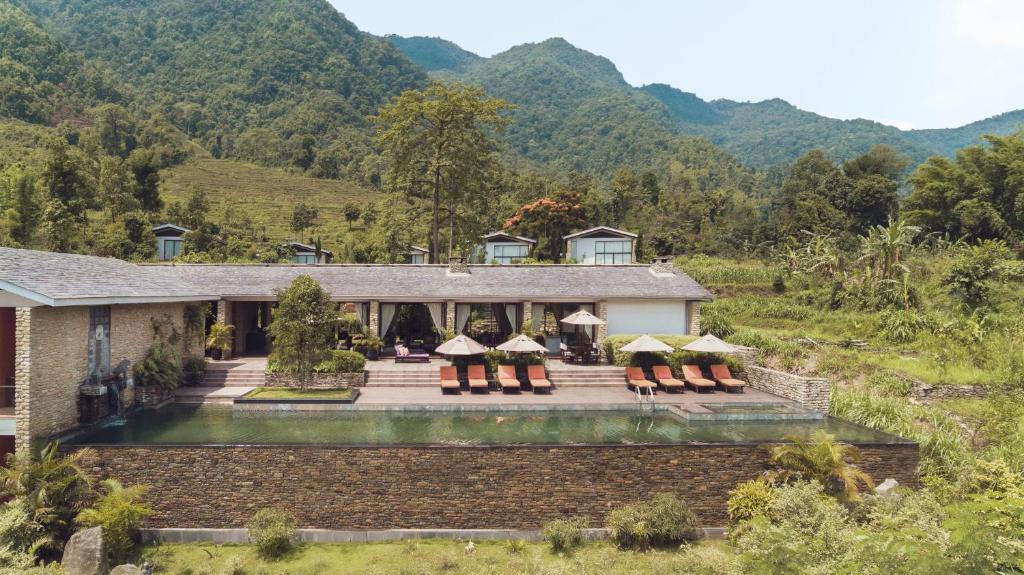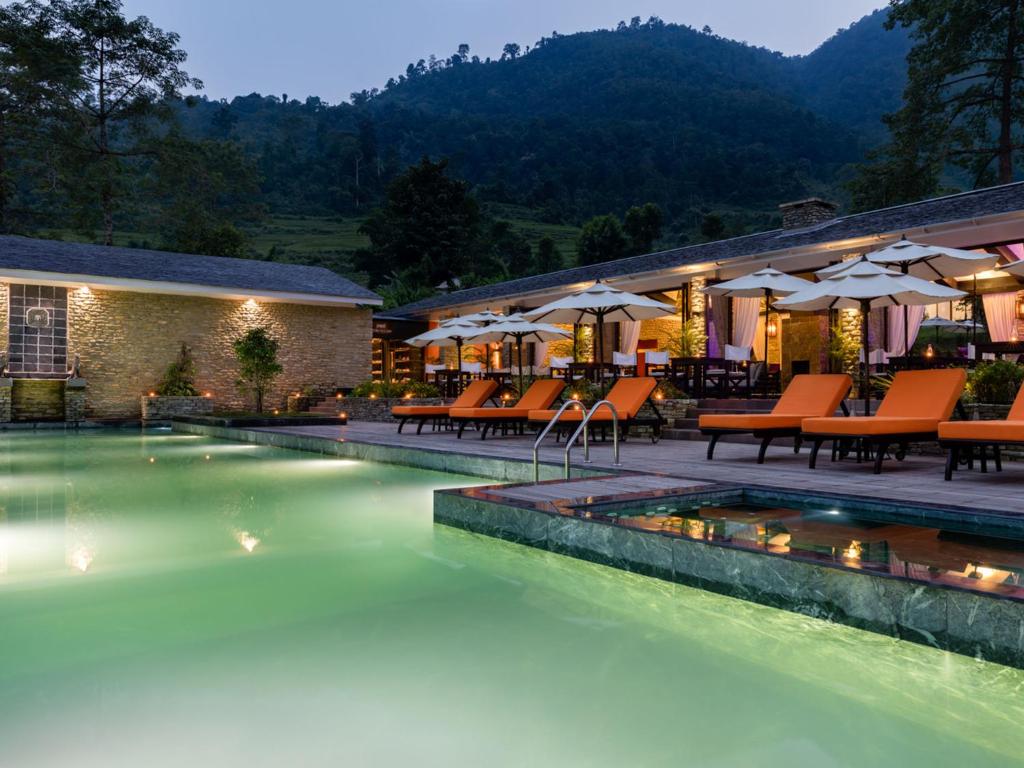
The Himalayas, a majestic tapestry of snow-capped peaks, emerald valleys, and ancient cultures, have long captivated the human spirit. For centuries, these awe-inspiring mountains have drawn pilgrims, adventurers, and seekers of spiritual enlightenment. In recent decades, a new kind of traveler has begun to tread these hallowed grounds – the luxury traveler. Far from the rugged image of backpacking, luxury travel in the Himalayas offers an unparalleled opportunity to experience the grandeur of the world’s highest mountain range in comfort, style, and with a deep connection to its profound beauty and heritage.
A Glimpse into the Past: The Evolving Himalayan Journey
The history of travel in the Himalayas is as varied as its landscapes. Early travelers were primarily explorers, surveyors, and intrepid mountaineers who braved harsh conditions to chart unknown territories. The British Raj saw the development of hill stations like Shimla and Darjeeling, offering respite from the summer heat and a taste of colonial elegance. These were the nascent forms of luxury, with grand hotels and leisurely pursuits for the elite.
Related Articles about Himalayan Serenity: Unveiling the Allure of Luxury Travel in the Roof of the World:
- Finland: A Symphony of Nature, Culture, and Arctic Wonders
- Conquering the Norwegian Fjords: An Epic Journey Through Nature’s Masterpiece
- Africa’s Call: A Symphony of Adventure in the Cradle of Humanity
- Journey to the Azure Inferno: A Comprehensive Guide to Visiting Mount Ijen
- Whispers of the Gods: Unveiling the Magnificence of Angkor Wat
The post-independence era witnessed an influx of backpackers and budget travelers, drawn by the allure of spirituality and adventure. However, a gradual shift began in the late 20th century as a discerning clientele sought to experience the Himalayas without compromising on comfort and personalized service. This led to the emergence of boutique hotels, bespoke itineraries, and a focus on experiential travel, catering to those who desired a deeper, yet refined, engagement with the region.
Main Attractions: A Symphony of Nature and Culture
The Himalayas are not a monolithic entity; they span several countries, each offering unique facets of luxury travel.
India:
- Ladakh: Known as "Little Tibet," Ladakh is a high-altitude desert offering breathtaking barren landscapes, ancient Buddhist monasteries clinging to cliff faces, and vibrant prayer flags fluttering in the wind. Luxury experiences here often involve staying in opulent tented camps with panoramic views, guided tours of monasteries like Thiksey and Hemis, and exploring the stark beauty of Pangong Tso and Nubra Valley.
- Himachal Pradesh: This state is home to the iconic hill stations of Shimla and Manali. Shimla, the former summer capital of British India, retains its colonial charm with grand heritage hotels, a toy train ride, and the Ridge promenade. Manali offers a blend of natural beauty and adventure, with luxury resorts nestled amidst apple orchards and offering access to Solang Valley for activities like paragliding and zorbing.
- Sikkim: A pristine gem nestled between Nepal and Bhutan, Sikkim boasts lush valleys, glacial lakes, and a rich Buddhist heritage. Luxury here translates to serene retreats with stunning Kanchenjunga views, guided treks to viewpoints like Tsomgo Lake, and cultural immersion in the monasteries of Rumtek and Pemayangtse.
Nepal:
- Kathmandu Valley: While the primary draw is Everest, the Kathmandu Valley offers a sophisticated introduction to Nepalese culture. Luxury stays in heritage hotels within the ancient city of Patan or near the spiritual hub of Boudhanath Stupa provide a serene base for exploring UNESCO World Heritage Sites, experiencing vibrant Newari culture, and indulging in fine dining.
- Pokhara: Nestled beside the serene Phewa Lake, Pokhara is the gateway to the Annapurna region. Luxury here involves lakeside resorts with stunning views of the Annapurna massif, boat rides on the lake, and curated excursions to viewpoints like Sarangkot for sunrise panoramas. For the more adventurous, helihikes to Everest Base Camp or the Annapurna Base Camp offer a thrilling, albeit short, luxury experience.
Bhutan:
- The Last Shangri-La: Bhutan is renowned for its commitment to Gross National Happiness and its controlled tourism policy, which inherently lends itself to a more exclusive and luxurious experience. Luxury in Bhutan means staying in exquisite lodges and hotels that blend seamlessly with the natural environment, offering unparalleled service and cultural immersion. Key attractions include the iconic Tiger’s Nest Monastery (Paro Taktsang), the Punakha Dzong, and exploring the vibrant capital of Thimphu. Every aspect of a Bhutanese journey is meticulously planned, from private guides to exclusive cultural performances.
Tibet:
- The Roof of the World: For the truly intrepid luxury traveler, Tibet offers an unparalleled spiritual and cultural journey. While access can be more regulated, luxury options involve private guided tours of the Potala Palace in Lhasa, exploring the sacred Jokhang Temple, and experiencing the vastness of the Tibetan plateau. Luxury accommodations often blend traditional Tibetan aesthetics with modern comforts.
Travel Tips for a Luxurious Himalayan Sojourn:
- Plan Well in Advance: Luxury accommodations, especially in peak season, book up quickly. For bespoke itineraries, engaging a specialized luxury travel agent is highly recommended.
- Altitude Acclimatization: The Himalayas are at high altitudes, and acclimatization is crucial. Choose accommodations that facilitate this, and be prepared for slower paces and potential mild altitude sickness. Consult your doctor before your trip.
- Pack Smart: While luxury travel implies comfort, the Himalayan climate can be unpredictable. Pack layers of warm clothing, waterproof gear, good hiking boots, and sun protection. A good quality camera is a must.
- Respect Local Customs: The Himalayas are home to deeply spiritual communities. Dress modestly when visiting religious sites, learn a few basic phrases of the local language, and be mindful of local traditions and etiquette.
- Embrace Slow Travel: Luxury travel in the Himalayas is not about rushing. Allow time to soak in the atmosphere, connect with the locals, and appreciate the profound tranquility of the mountains.
- Sustainable Tourism: Choose operators and accommodations that prioritize eco-friendly practices and support local communities. This ensures the preservation of the Himalayas for future generations.
Best Time to Visit: Chasing the Perfect Himalayan Glow
The ideal time to visit the Himalayas for luxury travel depends on the specific region and your interests:
- Spring (March to May): This is a beautiful time with blooming rhododendrons and pleasant temperatures. The skies are generally clear, offering excellent mountain views. This is ideal for trekking and exploring valleys.
- Summer (June to August): While some lower-lying areas can be hot and humid, higher altitudes remain pleasant. This is a good time for exploring Ladakh and the arid regions. The monsoon season can affect accessibility in some parts of India and Nepal.
- Autumn (September to November): Often considered the prime time for luxury travel. The skies are exceptionally clear, offering the most spectacular mountain vistas. Temperatures are cool and comfortable, making it perfect for trekking and sightseeing. The festivals of Diwali and Dashain (in Nepal) add a vibrant cultural dimension.
- Winter (December to February): For those seeking snow-covered landscapes and a cozy retreat, winter offers a unique charm. Some higher passes may be closed, but lower valleys are accessible. Luxury lodges often offer fireplace ambiance and special winter activities.
Nearby Hotels: Sanctuaries in the Sky
The luxury hospitality scene in the Himalayas has blossomed, offering a range of exquisite accommodations:
- The Oberoi Vanyavilas Wildlife Resort, Ranthambore (India): While not directly in the high Himalayas, this resort offers a luxurious gateway to the foothills and incredible wildlife experiences, often combined with Himalayan journeys.
- The Leela Palace, Udaipur (India): Similar to Oberoi Vanyavilas, this offers a luxurious prelude or postlude to a Himalayan adventure, showcasing royal heritage.
- The Himalayan, Manali (India): A boutique luxury hotel offering stunning valley views, personalized service, and a serene escape amidst apple orchards.
- Taj Tashi, Thimphu (Bhutan): A magnificent hotel blending traditional Bhutanese architecture with modern luxury, offering impeccable service and cultural immersion.
- Uma by COMO, Paro and Punakha (Bhutan): These exclusive lodges offer intimate luxury, exceptional dining, and personalized experiences designed to connect guests with Bhutan’s natural and cultural heritage.
- The Dwarika’s Hotel, Kathmandu (Nepal): A living museum of Nepalese heritage, this hotel offers a luxurious and culturally rich stay, with exquisite craftsmanship and traditional Newari hospitality.
- Shangri-La Lhasa Resort (Tibet): Offering a blend of Tibetan aesthetics and modern amenities, this resort provides a comfortable and stylish base for exploring Lhasa’s iconic landmarks.
Local Food: A Culinary Journey Through the Himalayas
Himalayan cuisine is a reflection of its diverse geography and cultural influences, offering a delicious and often hearty experience.
- Momos: Steamed or fried dumplings filled with vegetables, meat, or cheese, a ubiquitous and beloved dish across the region.
- Thukpa: A hearty noodle soup, perfect for colder climates, often made with vegetables, meat, and warming spices.
- Dal Bhat: The staple meal in Nepal and parts of India, consisting of lentil soup, rice, and vegetable curries. It’s nutritious and filling.
- Yak Cheese and Butter: A delicacy in high-altitude regions like Ladakh and Tibet, offering a unique, rich flavor.
- Butter Tea (Po cha): A traditional Tibetan beverage made with tea, yak butter, and salt, offering warmth and sustenance in the cold.
- Sizzling Platters: Many luxury hotels offer refined versions of local dishes, often with a modern twist, using fresh, seasonal ingredients. Expect beautifully presented curries, grilled meats, and aromatic rice dishes.
Transportation Options: Navigating the Majestic Peaks
Luxury travel in the Himalayas offers a range of comfortable and efficient transportation options:
- Private Flights and Helicopters: For the ultimate in convenience and breathtaking aerial views, private jet charters or helicopter transfers are available for journeys between major hubs or to remote locations.
- Luxury Vehicles: Well-appointed SUVs and private cars with experienced drivers are the standard for overland travel, ensuring comfort and safety on winding mountain roads.
- Heritage Trains: The Kalka-Shimla toy train in India is a UNESCO World Heritage Site and offers a charming, albeit slower, way to experience the lower Himalayan foothills in a nostalgic setting.
- Domestic Flights: While limited, domestic flights connect some major cities within Himalayan countries, saving time on longer journeys.
- Bespoke Treks with Luxury Support: For those who wish to experience the trekking culture, luxury tours often include comfortable lodges or high-end tented camps along the route, with porters carrying your luggage and gourmet meals prepared by dedicated chefs.
In conclusion, luxury travel in the Himalayas is an invitation to experience the world’s most magnificent mountain range not just as a spectacle, but as a profound and enriching journey. It’s about immersing yourself in ancient cultures, breathing in the crisp mountain air, and witnessing unparalleled natural beauty, all while enveloped in comfort and personalized service. From the serene monasteries of Bhutan to the stark beauty of Ladakh, the Himalayas offer a sanctuary for the soul, a place where adventure meets opulence, and where every vista is a masterpiece waiting to be discovered.








